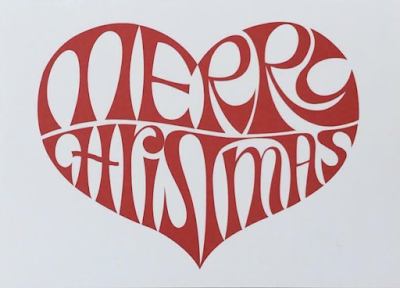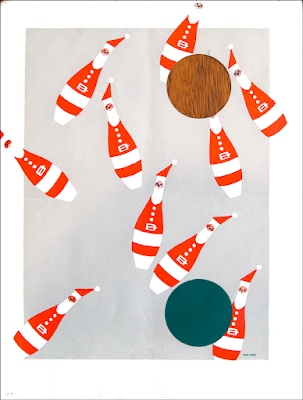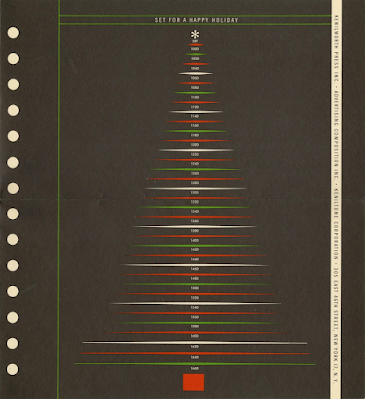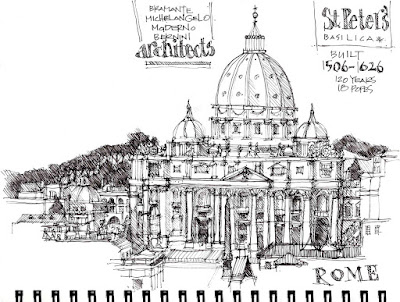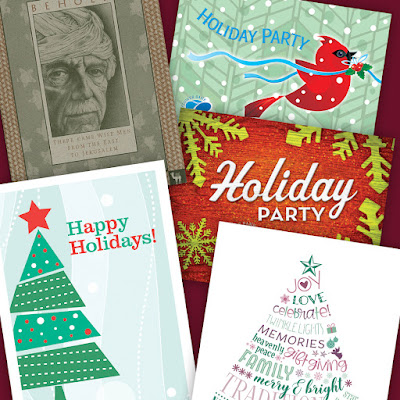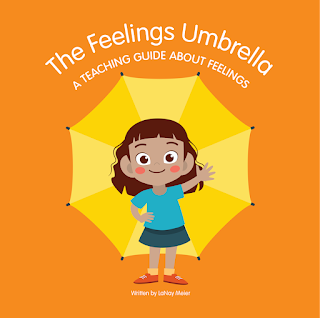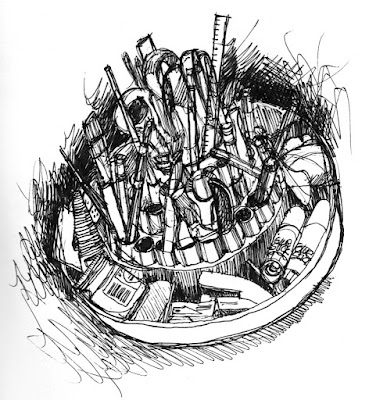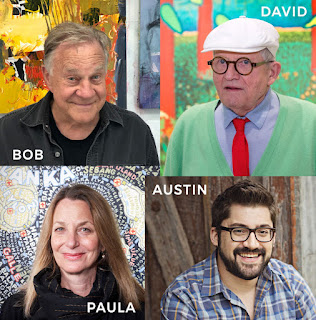Tuesday, November 23, 2021
Alexander Girard — then and now.
Architect and designer Alexander Girard was extremely prolific during the 1960s and 1970s. I bet you’d recognize his work — take a look at this excellent video from a recent episode of CBS Sunday Morning (under 5 minutes long). This Christmas card an example of his skill with typography and lettering (his font, Sansusie, is one of my favs). He’s very much back in vogue: Girard’s family is reintroducing him to new generations with this website, House Industries is selling a wooden Alexander Girard Nativity based on his characters (update: nativity is no longer available), and there’s even an Alexander Girard coloring book!
Sunday, November 21, 2021
More holiday inspiration from great designers.
Continuing with the theme of classic holiday cards I found while looking for inspiration for my own clients’ projects this year, here’s one from Paul Rand designed in the 1960s. I wish I would have thought of this for an assignment when I was teaching commercial art: design a holiday card inspired by an indoor sport. Such a smart design!
Saturday, November 20, 2021
Holiday card inspiration from the greats.
While designing Christmas cards for clients, I’ve been looking at past examples from some of my favorite designers/illustrators. Here’s a 1960s card from Milton Glaser (my all-time favorite), created for a typography company called Advertising Composition. He fashioned a Christmas tree from the type settings of its catalog. Anyone remember the days of type-specking?
BTW, Milton’s book Drawing is Thinking is an excellent ‘read’ (if you can call it ‘reading’) and demonstrates his idea that drawing is not just a way to represent reality, but a way to understand and experience the world.
Friday, November 12, 2021
All roads lead to Rome.
I can’t resist posting this drawing of St. Peter’s Basilica in Rome from my sketchbook, because tomorrow is one of the last classes for my Smithsonian World Art History certificate and the subject is Italian architecture. I drew this during a previous Smithsonian class using Pigma Micron pens in a variety of sizes. These pens wear out kind of fast, but they’re waterproof so I can add color.
I wish I had drawn it from life, but alas, no.
Wednesday, November 10, 2021
A poppy for Veteran’s Day.
Tomorrow is Veteran’s Day, and we’ll probably see a lot of poppies as a symbol of remembrance. Here’s a little illustration of a poppy I did in my sketchbook a while back, and some info about how that tradition got started.
From The Poppy Story on the American Legion’s website: “After World War I, the poppy flourished in Europe. Scientists attributed the growth to soils in France and Belgium becoming enriched with lime from the rubble left by the war. From the dirt and mud grew a beautiful red poppy. The red poppy came to symbolize the bloodshed during battle following the publication of the wartime poem “In Flanders Fields.”
You can read more about The Poppy Story on the American Legion’s website, where you can also download a poster of “In Flanders Fields.” And here’s a sweatshirt featuring my illustration.
In Flanders Fields
By John McCrae
In Flanders fields the poppies blow
Between the crosses, row on row,
That mark our place; and in the sky
The larks, still bravely singing, fly
Scarce heard amid the guns below.
We are the Dead. Short days ago
We lived, felt dawn, saw sunset glow,
Loved and were loved, and now we lie,
In Flanders fields.
Take up our quarrel with the foe:
To you from failing hands we throw
The torch; be yours to hold it high.
If ye break faith with us who die
We shall not sleep, though poppies grow
In Flanders fields.
Unique holiday greetings make an impression!
Make this season even more special by sending custom holiday cards to your clients and customers. It’s a thoughtful way to let people know you value their business.
I’m currently finishing up several customized greetings cards and letters for clients, but I think there’s time to squeeze in at least a couple more!
Ready to get started or have questions? Just send me a message here.
Wishing you a happy holiday season!
Sunday, November 7, 2021
Art history.
Thursday, November 4, 2021
The Feelings Umbrella
She wanted to create a book to help get this message across to children, so they could avoid the unfortunate situations that result from an inability to cope with emotions.
She asked for my help in putting the book together. Many friends and professionals helped to clarify the concept and message. Then I designed the book, using stock images which I revised to fit the story.
The result is The Feelings Umbrella, available here.
Tuesday, November 2, 2021
A bookish bombshell.
My collages often tell a story, but I don’t know what the story is until the piece is well underway. In this case, I started with a vintage dictionary page as a background, then began rummaging through my collection of ephemera and other odds and ends.
If the collage seems to need a particular item and I don’t have an image that works, I’ll draw or paint what I want. For this mid-century woman, I used colored pencil to draw some snazzy cat-eye glasses so that she could see her world more clearly — and read the dictionary page.
I made up a story about her as the piece came together, but I hope viewers are inspired to make up their own: who’s the woman, what did she see with her glasses, did she have a special relationship to any other of the ‘B’ words on the page?
A Bookish Bombshell was created for the Lincoln Art Center’s Book It show.
Monday, November 1, 2021
Forgotten art supplies.
I’m currently using a black version of the roto-tray, not a vintage as the red one, and short pencils still get lost down in the holes. This is its current state, drawn with my favorite pen, a Pilot G2 gel pen in black. Only one problem, it’s not waterproof.
Who's your inspiration?
Every Monday I get an email newsletter from painter Bob Burridge, which includes a link to one of his YouTube videos that he calls BobBlasts. They’re usually demonstrations of his technique, which is always loose and colorful and kinda wild. But this week’s BobBlast was about inspiration. He encouraged his viewers to think about who and what inspires them and use that inspiration for energy in their own work. It got me thinking:
Bob Burridge is an inspiration to me. I admire his discipline and dedication to his work. David Hockney, too, for many of the same reasons. Hockney comes up with new ways to look at things and is not afraid to evolve and adopt new technology. In the design world, I’ve admired Paula Scher for years. She’s created some of the most iconic identity systems in the world, and always finds time to do her own personal projects. Check out her typographic maps.
These are just a few of the people I find very inspiring, and they remind me to, as Austin Kleon (another inspiration) says, just keep going.
Saturday, October 9, 2021
Practice makes perfect.
The downside of a typical day for me is that it’s mostly spent staring at a computer screen. I do carry a sketchbook with me and frequently jot down details of my surroundings. But I love detailed drawing, and those kinds of projects don’t happen without conscious thought and planning.
Towards that end, a few friends and I have been meeting once a week to learn and practice lessons from the Bargue Drawing Course (here’s an economical alternative to the full course). It’s the way many art students in 19th-century European academies learned to draw.
The emphasis is on accuracy — no personal style or creative flair desired, just reproducing a set of lithographic plates exactly as they are; training the eye to see accurately. We use the sight-size method to get the measurements precise and then build the shading in layers to reproduce the effect we see in the original. Results build s-l-o-w-l-y. We spent hours copying a small preliminary sketch of an eye, getting every line placed at just the right angle in just the right spot. After 18 hours(!), I’ve done an eye, a bust of a man in profile, a hand (not finished), and next week will start on a sculpture of a torso. I’ll have 9 hours to finish that, then we’re taking a break for the holidays.
It’s been such fun to spend time with friends who are also interested in this style of drawing. We’re in good company: Van Gogh used the course to strengthen his drawing skills when he couldn’t make it as a student in a traditional academy. Bargue drawings aren’t meant to be an end in themselves, but a way to develop skills that I can use to improve other drawings.
Sunday, February 21, 2021
Meatball or worm?
As I watched yesterday’s thrilling landing of Perseverance on the surface of Mars, I couldn’t help but notice the big round NASA logo on the wall — the ‘meatball.’ Do you remember the NASA ‘worm’ logo? It was designed in 1975 by Bruce Blackburn (he just died earlier this month).
Blackburn’s design quickly became a symbol of the space age and the promising future that lay ahead. “The less you can do with the most effect, that’s the thing you want to do,” is how Blackburn described his process. He used a simple combination of lines, curved, and circle fragments to create the iconic design. Upon seeing the new design, a chief administrator of NASA reportedly said, “Where’s the cross strokes in the A’s? Feels like we’re not getting our money’s worth.”
Monday, January 18, 2021
Does your business image need a facelift? Or maybe just a little nip-and-tuck?
I design expressive and effective logos for companies of all sizes. Let’s talk about giving your business a fresh new look in 2021, with either a complete branding strategy including a new logo, or an update of your current business image. Send me a message today and we’ll get started!

